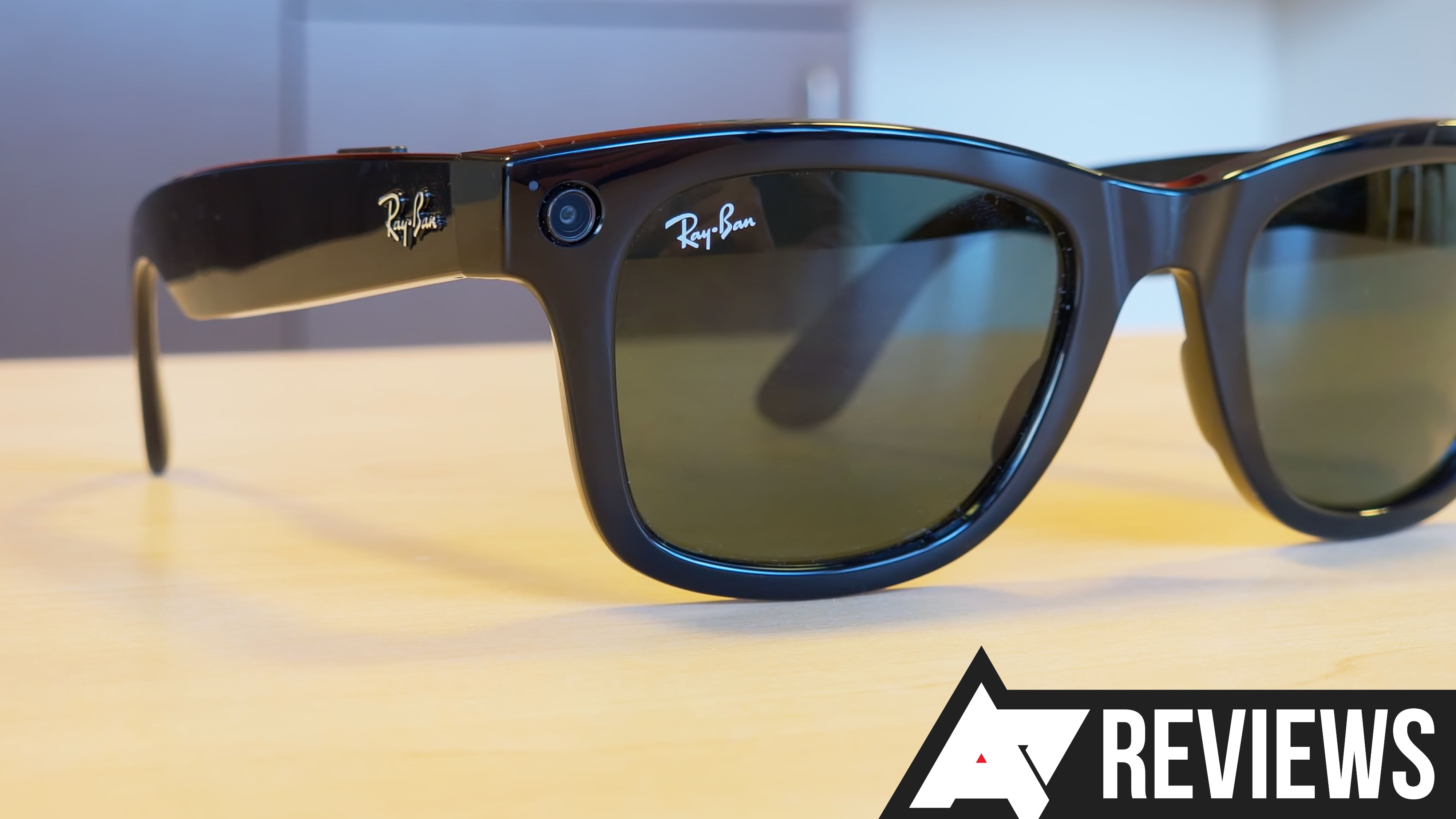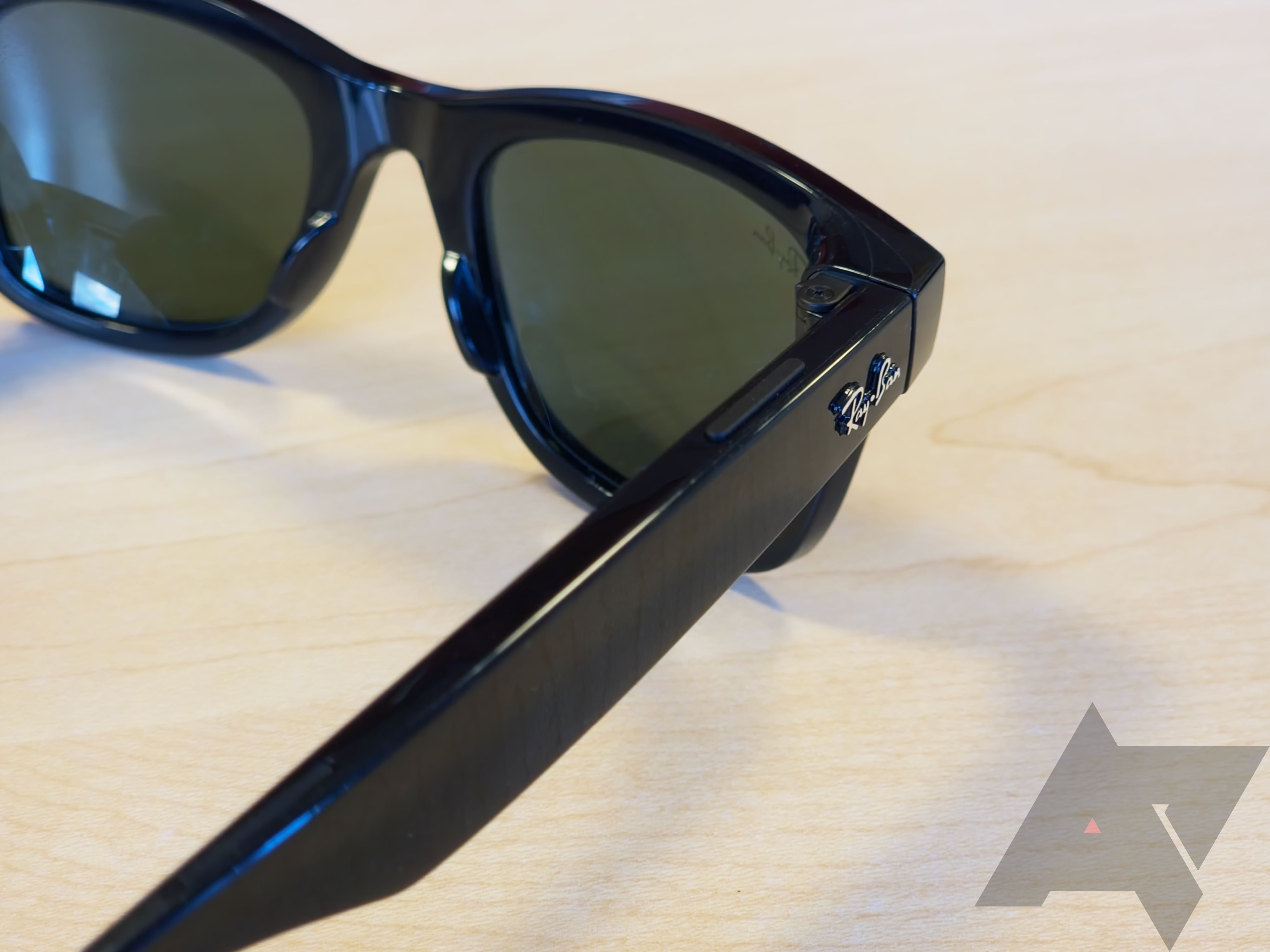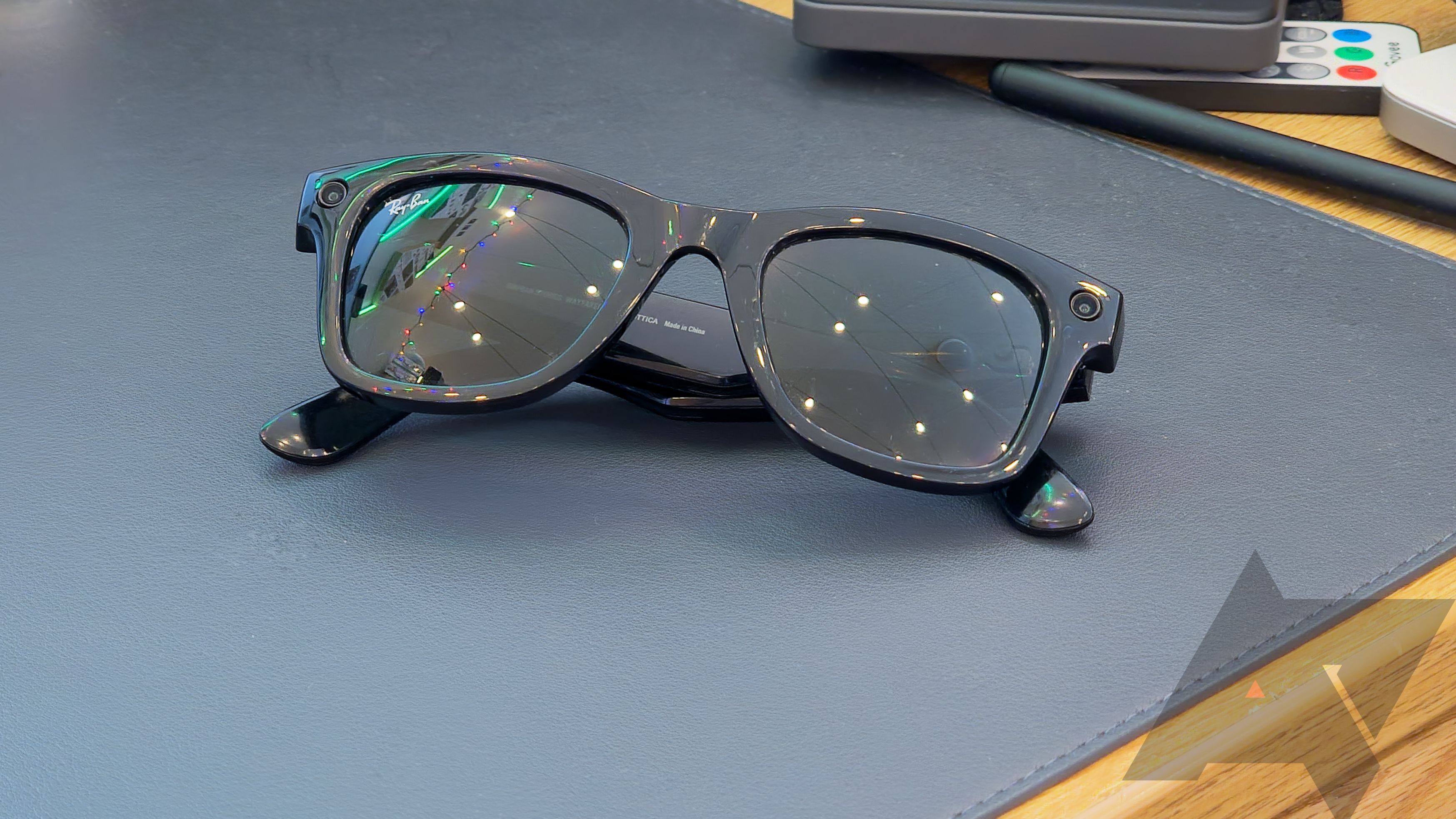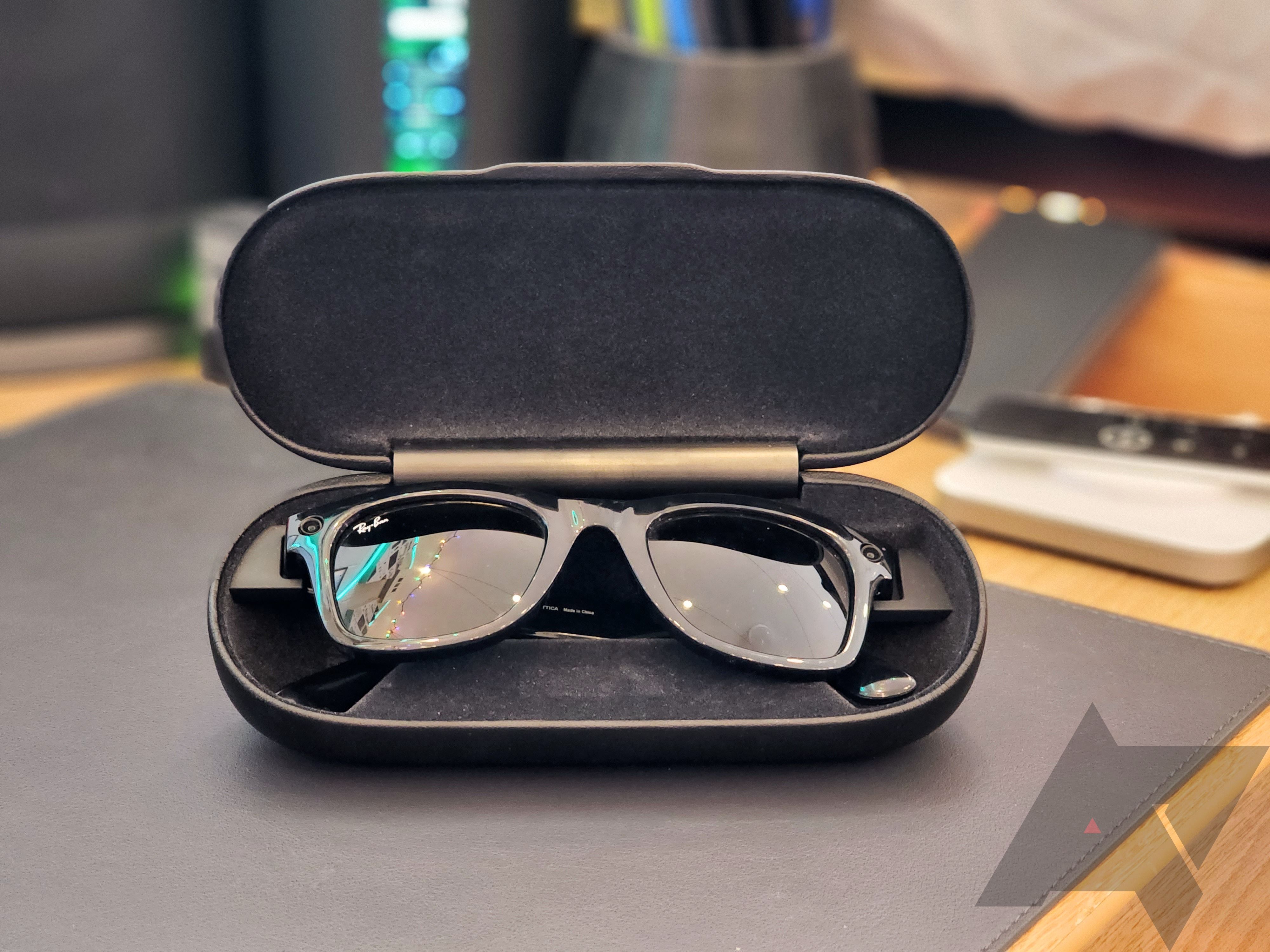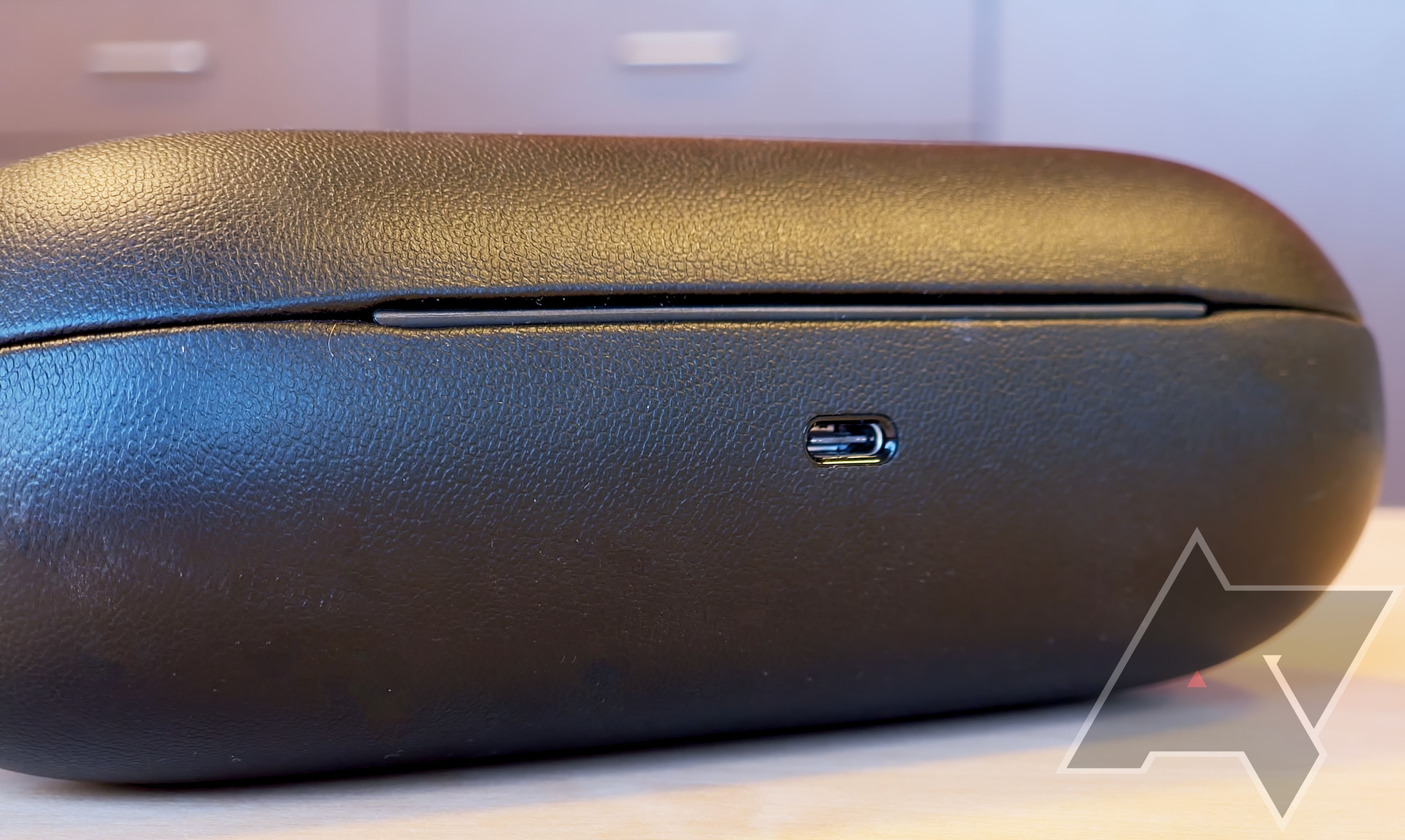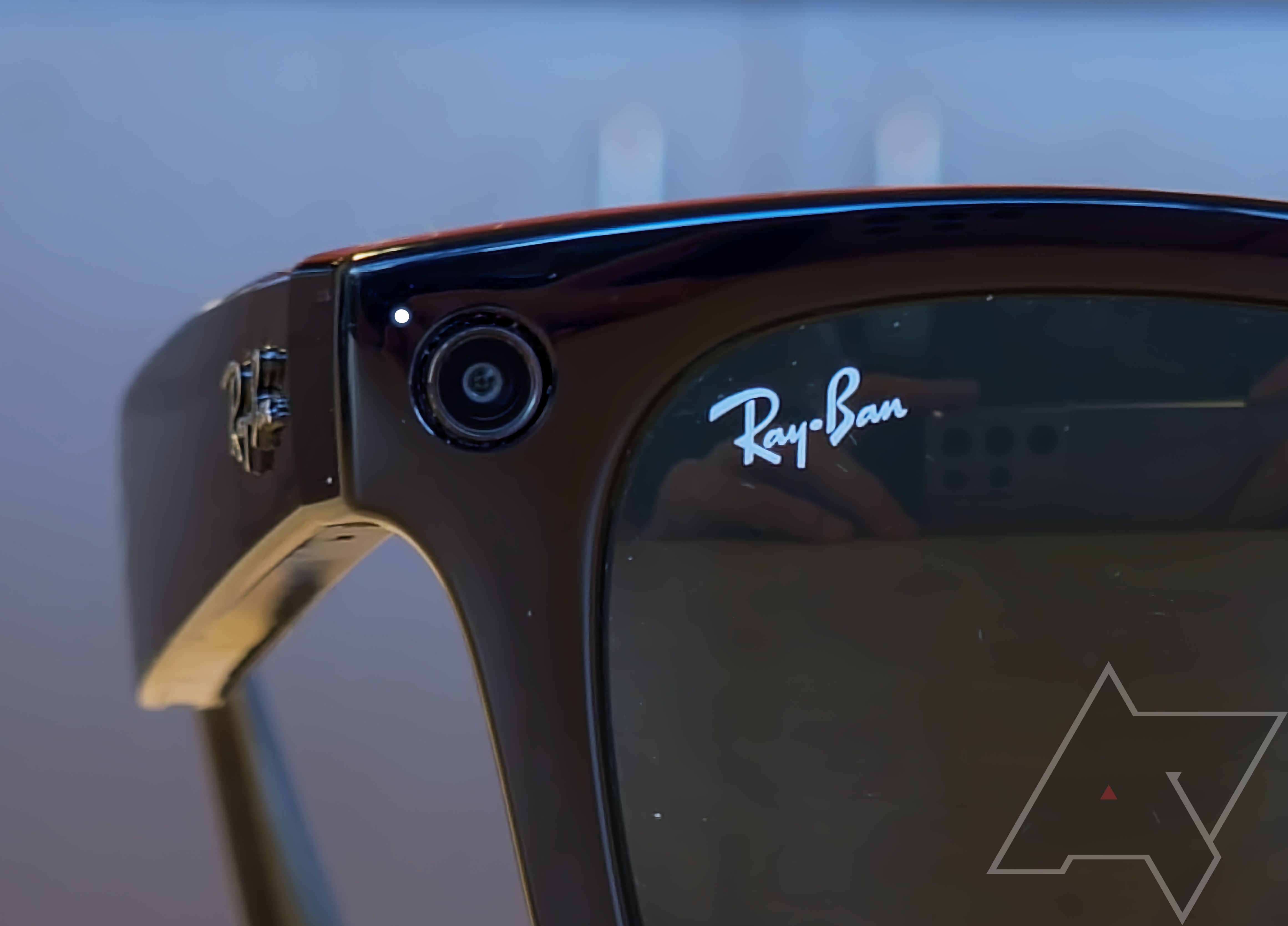Read update
- Still very ma-ma-ma-mid
When I heard Facebook announced smart glasses with cameras, I thought it was a joke. Why would Facebook, a company infamous for misusing data, release a pair of glasses with a camera? Nevertheless, Facebook worked with Ray-Ban and created the Rayban Stories, a pair of smart glasses with a built-in speaker and not one but two cameras. The Stories are good as far as smart glasses go... which isn't very far.
Ray-Ban Stories
- Audio: Two open ear speakers, 3 mic array
- Controls: Capacitive Strip, shutter button, power switch
- Power: 3 hour battery, USB C on case for charging
- Speakers: Shockingly good and completely unexpected
- Charging case: Smartest way I've seen to charge smart glasses
- Design: These are the best looking smart glasses on the market. Look like actual sunglasses.
- Camera: The HDR is bad and you really need to stand still to get a clear photo
- Camera indicator light: It's either too much or not enough depending on what you think of it
- Facebook: Need I say more?
Design, hardware, what's in the box
Unlike every other pair of smart sunglasses I've seen, Facebook partnered with an actual well-known sunglasses company, Ray-ban, for design and branding. The Ray-Ban Stories I have are based on the Wayfarer style Ray-Ban glasses, but everything is just a little bigger. The stems are a little wider to make room for the speakers and battery and the rims are a little wider to make room for the camera and LED. You probably wouldn't be able to tell the difference between the Wayfarer stories and classic Wayfarer glasses unless you had them side by side. Basically, they look great.
The sunglasses do come in more than the Wayfarer style and black color. The Wayfarer glasses actually have 8 color options while the Round and Meteor have 4 and 5 color options, respectively. All of the glasses match the classic Ray-Ban design but, just like the Wayfarer, are a bit bigger. All three models in all colors are made of plastic and come with plastic lenses at the base model. You would expect them to come polarized at the $299 price tag, but that cost an extra $30. Ray-Ban does offer a prescription option, which starts at $230.80 for single vision and $335.80 for progressive lenses.
The glasses are comfortable. They aren't too heavy and don't really feel like they are clamping my head too much. They also don't feel like they're going to fall off easily, which is good. These are much better quality than the equally priced Bose Frames and slightly cheaper Echo Frames.
Because these are smart glasses, you can find a few pieces of tech in here. There are two 5MP cameras, two open air speakers, 3 microphones, and 4GB of storage. On the right stem is a capacitive area that controls media playback and volume while the button on the top of the stem is a shutter button. On the inside on the left stem is a switch that you can use to turn the glasses on, off, or pair them to your phone. These run on a Qualcomm chip, for whatever that's worth, and are, all in all, probably the most advanced smart sunglasses on the market right now.
In the box you get the carrying case/charger, cleaning cloth, and a USB-C cable. Unlike most other smart glasses, the Ray-Ban Stories charge in the case. On the back of the right hinge is a hidden connector that becomes accessible when the stems are folded back, meaning as long as the glasses are in the case, they're charging. The case has a USB-C port on the back.
It is worth noting that outside of the Facebook View app used for connecting and controlling the glasses on your phone, there is no Facebook or Meta branding on these glasses at all. The case has a Ray-Ban logo and the glasses have the logo on each stem.
Sound quality, camera quality, and features
The sound quality from the Ray-Ban Stories are honestly not bad. It's better than the Bose Frames and Amazon Echo Frames Gen 2. It still doesn't compare to something like a pair of traditional earbuds, but lacks the warmth and richness of most audio products. It's not something that will impress anyone, but it is nice to have. It's something that is nice to have at the beach instead of earbuds, but really won't replace your earbuds.



The camera quality on the glasses, on the other hand, is pretty bad. There is awful HDR to the camera and you need to stand still with no movement in the frame for a good picture to be taken. The video is fine at best, but I really never found myself taking videos. I strongly believe the point of the camera on these glasses was just to say they have a camera rather than any useful Facebook or Meta features.
There are two 5MP cameras that can take both photos and videos. The glasses can take "30+ 30 second videos" or "500+ photos." I would have loved to test the 4GB storage capacity to put it to its limits, but once it syncs the photos with your phone it deletes them off the glasses. You will probably never hit the 4GB limit.
One point of concern was the cameras and privacy. Having a camera that's hard to see could be used for a lot of creepy purposes, but as I used the glasses, I realized you really don't have to worry about it. If you see someone wearing these smart glasses, you'll know if they take a picture from the loud shutter sound that comes from the glasses speakers or the LED light on the frame. You will also see someone reach up to their glasses first to press the button before the shutter sound and LED light or say "Hey Facebook." Having cameras is always a privacy concern, but I believe someone would have an easier time sneaking a pic or video from a phone rather than the glasses.
The glasses have Facebook Assistant built in, but it's not a full-fledged assistant. It can only take photos or videos for you. You can activate it by saying "Hey Facebook" which always just felt a little wrong. I found myself just using the shutter button instead.
You sync all the images and videos to the Facebook View app on your phone. It connects to the glasses and downloads all the photos and videos, allowing for you to save it to your camera roll or sharing to Instagram, Facebook, WhatsApp, or Facebook Messenger.
If you're worried about privacy, Facebook says no images ever leave the app or are shared with Facebook. There's no backup to the photos outside of your phone. You can take that at face value, which I honestly would with these. I swapped between phones 2 or 3 times while reviewing these glasses and found it didn't bring any of my photos or preferences over. It was all saved to the device and nothing on the glasses or (to my knowledge) Facebook servers. It is Facebook, so it's your choice whether you trust it or not. I do.
Should you buy it?
Probably not. If you take Facebook's privacy policy at face value, these glasses are cool. They aren't useful or practical, but they're the coolest smart glasses I’ve used. At the end of the day, if that's what you want, it's hard to dislike them. For $299 these are probably the best way to get into smart glasses right now.
Just because the Ray-Ban Stories are cool doesn't mean there aren't a few shortcomings. Instead of a camera, I would have loved to see something like electrochromic lenses like the unreleased Ampere Dusk promises. That also would have helped with a lot of the privacy concerns of Facebook putting a camera on your face. Alas, that didn't happen. All we’re left with is another pair of mediocre smart glasses that may or may not be a privacy disaster waiting to happen.
Buy it if...
- You like and trust Facebook
- You're willing to pay a high price to play with new tech
Don't buy it if...
- You don't trust Facebook
- You're unwilling to pay a premium for a first-gen product
UPDATE: 2022/03/01 BY MAX WEINBACH
Still very ma-ma-ma-mid
It's been another month with the Ray-Ban Stories sunglasses, and honestly, the charm wears off as you continue to wear them. These sunglasses are cool and a great gimmick, but I find myself going for a normal pair of sunglasses over these most days. Nothing about the Stories is necessarily bad, but they're more of a party trick you pull out in certain occasions rather than something you would wear every day.
Battery life remains fine, but this is still something you'll throw in its case to charge every time you get home. The camera remains mediocre and not something that's that functionally useful outside of showing it off. The speakers are useful every once in a while, but I would never choose to listen to music on them if I had another option.
I have a tough time finding opportunities to wear these. As a college student, I might wear these out to a party at the beach to grab some action shots, which would probably end up blurry, but otherwise, I would rather just grab normal sunglasses or no sunglasses. They look just weird enough compared to normal Ray-Bans that people will notice. They almost look like knock-offs of the originals rather than an official Ray-Ban product.
While there are some clever features, I just find it hard to practically justify using these. Other than action shots, which the glasses would probably fumble, it's hard to get people to pose to take pictures from sunglasses when I could just pull out my phone. The speakers are fine, but earbuds are just better in almost every way. The Ray-Ban Stories are cool and if you can find a practical use for all these features in your life, I'd recommend them, but I don't think you will. If you aim to change your habits around them, be ready for disappointment.

